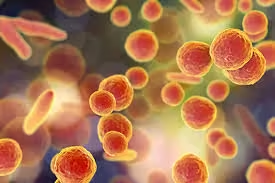
- Mycoplasma species are unique bacteria that can cause various infections, particularly in the respiratory and urogenital tracts.
- A cell wall and fastidious growth requirements are needed for laboratory identification.
- Understanding their characteristics, pathogenic mechanisms, and effective diagnostic methods is essential for managing infections.
- Public health education and awareness are important for preventing and controlling mycoplasma-related diseases.
General Character
- Genus: Mycoplasma
- Key Species:
- Mycoplasma pneumoniae (causes atypical pneumonia)
- Mycoplasma genitalium (associated with urogenital infections)
- Mycoplasma hominis (associated with pelvic inflammatory disease and other infections)
- Family: Mycoplasmataceae
- Gram Staining: Mycoplasma species do not have a cell wall, making them Gram-negative and resistant to standard Gram staining.
- Shape and Arrangement:
- Shape: Pleomorphic; can appear as spherical, filamentous, or branched forms.
- Arrangement: Typically found as single cells but can form clusters.
- Oxygen Requirements: Mycoplasma species are facultative anaerobes, some being strictly anaerobic.
Morphology
- Cell Wall Structure:
- Mycoplasma species lack a conventional cell wall, making them uniquely adaptable and vulnerable to osmotic pressure.
- Membrane Structure: Their membranes contain sterols, which help maintain stability and integrity.
Cultural Characteristics
- Growth Media:
- Mycoplasma species require specialized media for growth, such as Mycoplasma agar or PPLO (Pleuropneumonia-Like Organism) broth.
- Colony Appearance:
- Colonies may appear as small, fried egg-shaped colonies on solid media.
- Temperature and pH Range:
- The optimal growth temperature is typically around 37°C, with an ideal neutral pH.
Biochemical Reactions
- Catalase Test: Mycoplasma species are catalase-positive.
- Oxidase Test: Mycoplasma species are oxidase-negative.
- Fermentation: Mycoplasma does not ferment carbohydrates; it requires preformed nutrients from the host or culture media.
Pathogenicity
- Virulence Factors:
- Adhesins: Surface proteins allow attachment to host cells.
- Cytotoxic Effects: Mycoplasma can damage host cells and evade the immune response.
- Clinical Infections:
- Mycoplasma pneumoniae:
- Causes atypical pneumonia, often called “walking pneumonia,” characterized by a persistent cough, fever, and malaise. It commonly affects younger populations.
- Mycoplasma genitalium:
- Associated with urethritis, cervicitis, and pelvic inflammatory disease. It can contribute to infertility.
- Mycoplasma hominis:
- It can cause urogenital infections and has been implicated in postpartum infections and other complications.
- Mycoplasma pneumoniae:
Laboratory Diagnosis
- Specimen Collection: Clinical specimens may include respiratory secretions, urine, or swabs from affected areas.
- Microscopic Examination:
- Direct visualization is challenging due to lacking a cell wall; specialized staining methods may be used.
- Culture Techniques:
- Inoculation in specialized media; growth may take several days to weeks.
- Serological Testing:
- Serological tests can detect antibodies against Mycoplasma species but may not be specific.
- Molecular Methods: PCR is increasingly used for rapid and specific detection of Mycoplasma DNA.
Antibiotic Resistance
- Emergence of Resistance: Mycoplasma species show inherent resistance to beta-lactam antibiotics due to the absence of a cell wall.
- Treatment Options:
- Mycoplasma pneumoniae: Treatment typically includes macrolides (e.g., azithromycin) or tetracyclines (e.g., doxycycline).
- Mycoplasma genitalium: Often treated with azithromycin or moxifloxacin, though resistance patterns are emerging.
Prevention
- Hygiene Practices: Good hygiene and safe sexual practices can reduce the risk of Mycoplasma infections.
- Public Health Measures: Education about transmission routes and symptoms can aid early detection and treatment.